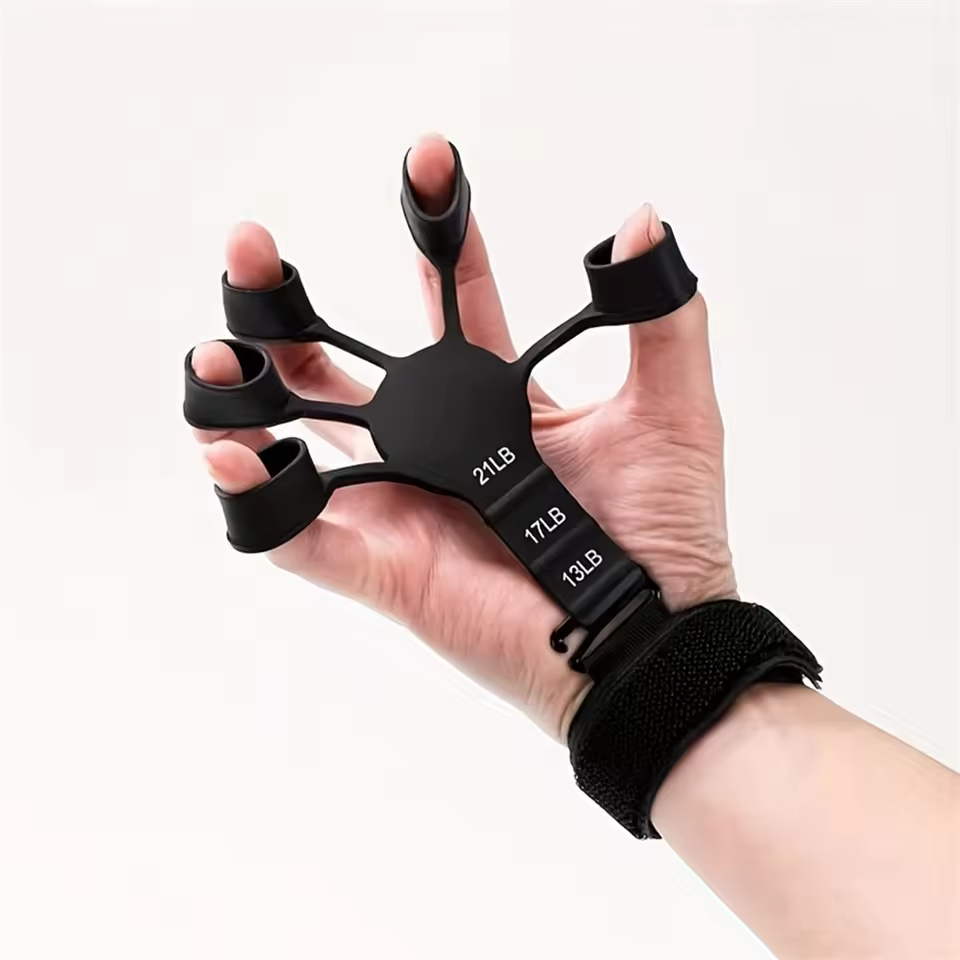The Principles of Resistance Training with Bands
Resistance training with bands challenges muscles by creating tension. This tension acts as a force against which your muscles must work. With bands, resistance level changes during the exercise. This can help activate different muscle fibers.

Types of Resistance Bands and Their Benefits
Various types of resistance bands are available, each suiting different needs. Flat bands are good for stretching and rehab. Tube bands with handles support full-body workouts. Loop bands are great for lower body exercises. Resistance bands often come in various tensions. Lighter bands are suited for beginners. Heavier bands provide more challenge for strength building. Their benefits are portability and versatility. They are useful for workout variety and maintaining muscle tension throughout exercises.
How Resistance Bands Work to Build Muscle
Resistance bands work muscles differently than weights. They create resistance from multiple directions. This can lead to increased muscle activation. When you stretch a band, resistance builds. This causes muscles to contract. Over time, this contraction and tension lead to muscle growth. Bands are effective for both concentric and eccentric phases of exercises. This can help in building muscle strength and size. Making sure to use proper form is key. Controlling the movement ensures that muscles work effectively.
Comparing Resistance Bands to Free Weights
Many gym enthusiasts debate between resistance bands and free weights. Both have their unique advantages in strength training. Understanding their effects can help tailor workouts to your goals.
Effectiveness of Bands vs. Weights for Strength Gain
Are resistance bands effective compared to traditional weights? Yes, they are, especially for progressive resistance. They allow muscles to engage through a full range of motion. This challenges the muscles differently than static weights. Studies suggest that bands can be as effective as weights when used consistently. The key is how you use them. Bands increase tension as they stretch, offering a unique resistance profile that weights can’t replicate.
Another point is versatility. Resistance bands adapt easily to various exercises. They work for all fitness levels. They also reduce stress on joints, making them ideal for many people.
Pros and Cons of Each Method
Both resistance bands and free weights come with their set of advantages and drawbacks. Let’s break them down.
Pros of Resistance Bands:
- Lightweight and portable, perfect for travel.
- Lower risk of injury due to less stress on joints.
- Allows for a greater variety of exercises and movement patterns.
- Can achieve full muscle contraction and tension throughout movements.
Cons of Resistance Bands:
- Resistance level may not be as high as heavy weights.
- Durability can be a concern as they wear out over time.
Pros of Free Weights:
- Clear and consistent levels of resistance.
- Ideal for heavy lifting and muscle mass increase.
- Wide range of weights suitable for all strength levels.
Cons of Free Weights:
- Heavier and not travel-friendly.
- Higher risk of injury if not used with proper form.
Ultimately, your choice might come down to personal preference or specific fitness goals. Combining both methods could also be a strategy for a comprehensive workout regime.
Incorporating Resistance Bands into Your Routine
Integrating resistance bands into your workout routine adds variety and challenges your muscles in new ways. To get the most from resistance band workouts, follow best practices and try exercises targeting different muscle groups.
Best Practices for Resistance Band Workouts
To ensure are resistance bands effective, apply these tips:
- Start with a proper warm-up to prepare your muscles.
- Choose the right band for your fitness level and the exercise at hand.
- Focus on your form to maximize muscle engagement and prevent injury.
- Increase resistance as your strength improves by moving to bands with higher tension.
- Incorporate both compound and isolation exercises for a full-body workout.
- Maintain a controlled pace to keep tension on your muscles throughout the exercise.
Sample Exercises for Different Muscle Groups
Try these exercises to work different muscle parts:
- Bicep curls and tricep extensions for arm strength.
- Squats and lunges for the lower body.
- Shoulder presses and lateral raises for strong shoulders.
- Chest presses and flies for the chest.
- Bent-over rows and pull-aparts for back muscles.
- Glute bridges and clamshells for targeting glutes.
Always remember to adjust the tension to fit your current strength level and to progress gradually. Proper band use can lead to effective strength gain and a more diversified workout regime.
Safety and Maintenance of Resistance Bands
Proper safety and maintenance are crucial for maximizing the benefits of resistance bands. With correct use and care, you can prevent injury and extend the lifespan of your bands.
Tips to Avoid Injury
To ensure your workouts are safe when using resistance bands, keep these tips in mind:
- Perform a warm-up prior to your band workout to get your muscles ready.
- Check your bands for signs of wear or damage before each use.
- Never overstretch the bands beyond their intended length.
- Secure the bands firmly to avoid snapping back.
- Wear appropriate shoes to prevent slipping when standing on the bands.
- Follow good form and avoid jerky movements.
Safety is crucial for effective workouts. These precautions reduce the risk of injury, making resistance bands a safer option for strength training.
Care and Lifespan of Bands
Caring for your resistance bands will lengthen their lifespan.
- Keep them away from direct sunlight and heat sources.
- After use, wipe them down to remove sweat and oils that can degrade the material.
- Store them flat or loosely coiled in a cool, dry place.
- Regularly inspect them for tears and replace if necessary.
By following these care guidelines, you can ensure that your bands remain reliable and effective for your fitness regimen. This care routine contributes to the overall effectiveness of resistance bands, keeps them in good condition, and helps you avoid unexpected equipment failure during a workout.
Combining Resistance Bands with Other Equipment
Combining resistance bands with other equipment can enhance your workout efficiency. It brings variety and intensity to your training routine.
Integrating Bands with Weight Training
Integrating resistance bands with weight training can boost strength gains. It offers dynamic resistance that the body isn’t used to. Here’s how to do it:
- Add bands to barbells or dumbbells to increase tension.
- Use bands to perform assisted pull-ups or dips.
- Try band-resisted push-ups for added chest and arm challenge.
These methods can help overcome strength plateaus and keep muscles engaged differently.
Creative Workouts Using Resistance Bands and Bodyweight
Bodyweight exercises are effective for fitness. When paired with resistance bands, they become even more powerful. Try these ideas for a well-rounded session:
- Use bands for resistance jumping jacks or squats.
- Do resisted walking or lunging for lower body power.
- Practice band-resisted planks or mountain climbers for core strength.
A bodyweight and band routine targets different muscles and improves balance and coordination. This combination keeps workouts fresh, challenging, and effective.
The Role of Resistance Bands in Physical Therapy
Physical therapy often incorporates resistance bands. They aid recovery and improve mobility.
Rehabilitation Exercises with Bands
Bands play a key role in rehab exercises. They offer resistance that helps rebuild strength. Patients use them for joint stabilization and muscle activation. Common rehab exercises include leg stretches, arm raises, and shoulder rotations. These exercises use bands to gently engage muscles and tendons.
Bands can adapt to different force levels. This flexibility supports patients at various recovery stages. Therapists frequently adjust band resistance to match healing progress.
Advantages of Bands for Injury Recovery
Bands are gentle on the body. This makes them excellent for injury recovery.
Their low impact nature protects recovering joints and tissues. Bands can increase or decrease resistance. This versatility supports safe, gradual strength building. They also enhance joint flexibility and movement range.
Stay consistent with band exercises to see recovery benefits. Always follow prescribed rehab routines for best outcomes.
Measuring Progress and Setting Goals with Bands
To answer ‘are resistance bands effective’, monitoring progress is key. Setting goals helps track improvements in strength and flexibility. Here’s how to measure progress with resistance bands:
Tracking Strength and Flexibility Improvements
- Record the tension level of bands used and note when it’s time to upgrade to higher resistance.
- Track the number of sets and reps over time. Look for increases as a sign of growing strength.
- Use a fitness journal or app to keep a detailed record of workouts and progress.
- Include flexibility measures, such as range of motion, to notice improvements from stretching with bands.
Challenges and Rewards of Resistance Band Training
Challenges:
- Initially, it may be difficult to find the right resistance level.
- Progress can be less visible without weight increments like in free weight training.
Rewards:
- Portability allows for consistent workouts, aiding in steady progress.
- Versatility in exercises challenges the body and can lead to quicker improvements.
- The reward of moving up to a higher resistance band is a tangible sign of increased strength.
Utilize these methods to ensure your efforts with resistance bands are effective and geared towards achieving your fitness goals.
Real-life Success Stories and Testimonials
Personal Journeys: Achieving Fitness Goals with Bands
Many people have achieved their fitness goals with resistance bands. Users often notice improved strength and flexibility after consistent use. Some share stories about using bands for home workouts. They find band training effective and easy to fit into busy schedules. Others overcame plateaus by adding bands to their routines. Success stories inspire newcomers to try resistance band workouts.
One user, for example, gained noticeable arm definition within weeks. Another user recovered from an injury using bands and now enjoys pain-free exercising. These personal stories highlight how bands can transform fitness journeys.
Expert Opinions on the Effectiveness of Resistance Bands
Fitness experts recognize the benefits of resistance bands. They often recommend bands for various fitness levels. Experts appreciate the bands’ ability to provide a full-body workout. They also point out the low risk of injury with band exercises.
Physical therapists endorse bands for rehab and injury prevention. They highlight the ability of bands to provide adjustable resistance. This makes bands suitable for gradual strength building. Coaches and trainers often integrate bands in athletes’ training. They use bands for improving strength, endurance, and flexibility.
Overall, experts agree are resistance bands effective. They confirm that with the right approach, bands can yield impressive results.